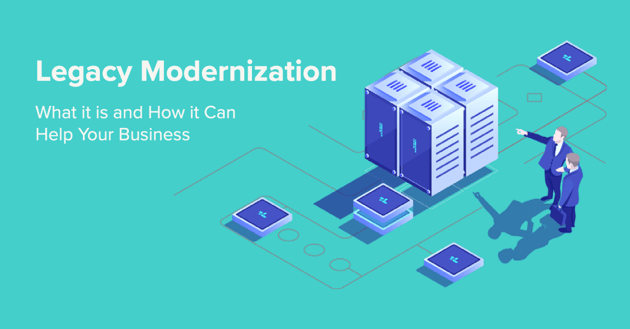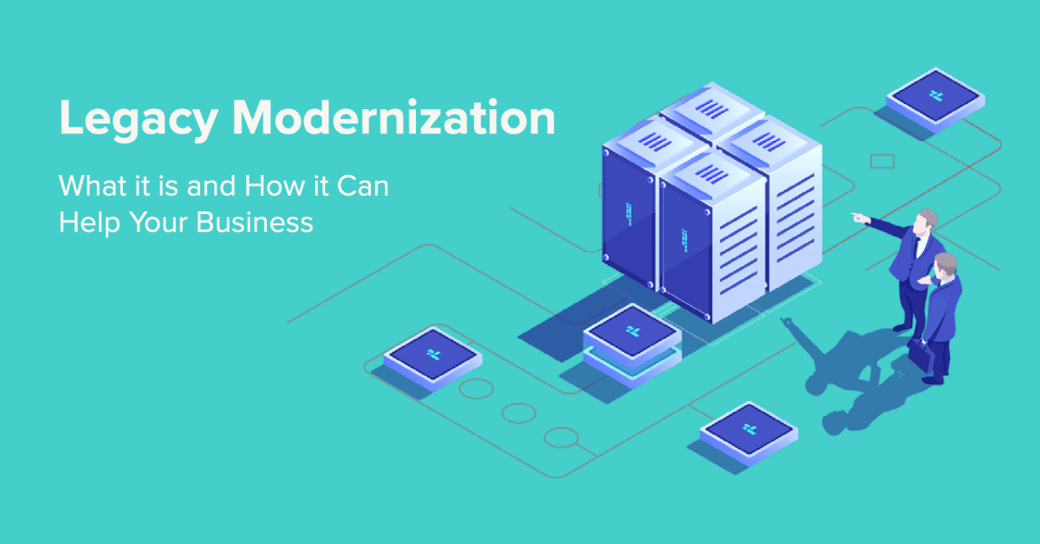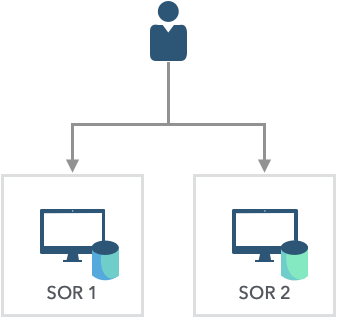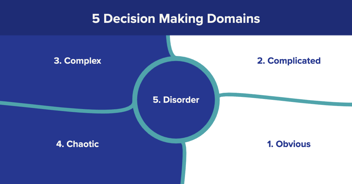Insights
What is Legacy Modernization and How It Can Help Your Business
 What is a legacy system?
What is a legacy system?
A legacy system is outdated computing and or hardware still in use. Yes, the system still meets the initial needs it was built for, but it hasn't allowed for growth. What it is currently capable of doing is all it will ever do. A legacy system's older technology won't allow it to interact with newer programs.
As technology advances, most companies find themselves dealing with the issues caused by an existing legacy system. Though they are typically understood as 'old' legacy systems, they are not necessarily software created in the early 2000s. In truth, legacy software is not always defined solely according to its age.
Legacy refers to any piece of software or an entire system blocking or reducing the speed of a company's ability to grow, adapt, or shift in the face of changing market forces.
Suppose the system has a lack of IT support or is unable to support an organization's needs. Then it is considered a legacy system. A piece of software unable to integrate with new systems or processes is considered legacy software. Legacy technology often experiences problems related to:
- Maintenance
- Integration
- User experience
- Improvement
- Support
What is legacy system modernization?
Legacy modernization means updating some or all of your IT to support your business goals and processes appropriately.
For business leaders to successfully enable innovation at their companies, they need the right technologies and support. They require fast applications, a connective system, and platforms to unify everything. The majority of older IT stacks fail to meet these kinds of modern needs, which is why legacy modernization is so critical.
What are your choices for a legacy modernization?
Legacy modernization does not take a single approach. The best method truly depends on the problem you’re trying to solve. Experts agree there are five different approaches to legacy modernization.
1. A complete transformation
Also known as a "rebuild and replace," this approach to legacy modernization allows you to start from the basement. You begin with a complete assessment of what works and what doesn’t with the legacy system. By employing a DevOps team, you can replace old key components with entirely new technology, systems, and a platform to meet your business needs and goals.
2. A gradual replacement
This approach is as precise as it sounds, not replacing everything at once. Instead, you begin by replacing your legacy system one component at a time as the need arises. For example, if your web application needs new functionalities for user experience, you can change it without affecting the other systems.
3. Make quick fixes
This method begins with a thorough assessment of your legacy system. Still, the goal is to improve more minor problems with new code, applications, or processes. The most significant issues are identified during the initial assessment and prioritized to reduce downtime and avoid spending too much on the project from the beginning.
4. Improving existing systems
IT leaders have efficiency in mind with this approach. They want to redesign their legacy system without introducing new architecture or platforms. This method emphasizes processes, workflows, and management rather than the stack itself. It can also include refactoring code and rehosting without directly affecting function and features.
5. Make no change at all
Choosing not to engage with legacy system modernization at all and remain content with your legacy system run as its old, inefficient self may seem very enticing because it costs absolutely nothing to execute. However, the actual cost of not making a change will add up over time.
Rather than rushing into an approach, take the time to consider which legacy modernization format works best for you. With thorough research and preparation, your modernization plan will run much smoother.
What questions should you ask while developing a legacy modernization plan?
1. What is working well in our legacy software?
Software itself doesn't age well. But at the same time, not necessarily everything needs to be replaced. Or maybe in your case, it does? Until you conduct an assessment of your legacy systems, you won’t know what’s working well and what’s not. Understanding the good and the bad of your software is the foundation of your modernization efforts.
2. Which legacy system modernization approach do we want to take?
From a rebuild and replacement to bit-by-bit updates, you’ll want to be clear which approach works best for your company's needs. If you aren’t entirely sure which strategy to choose, a technology partner can help. You can get started on your benchmark assessment to better understand what you want before starting a conversation with us.
3. What are your goals in the legacy modernization process?
Yes, your IT should work to accomplish your business goals, but legacy modernization is not just an IT endeavor. It is a business undertaking as well. Any changes you make to your enterprise software should also help your business needs and goals.
4. How will we accomplish these goals through modernization?
Your IT capabilities should help accomplish your business goals by tying your modernization efforts to how you defined them in the question above. Creating descriptive and detailed tasks will help layout the big picture ahead and give you the flexibility and competitiveness to achieve those goals on time.
Why modernization legacy systems for your business?
With business forces changing constantly, keeping your computing and hardware capabilities up to date can be challenging. Suppose your existing architecture prevents you from meeting your business needs and making the changes you need to stay competitive. In this case, it may be time for legacy modernization. Regardless of the approach you choose, modernization is a complex, labor-intensive, and risky process. Yet, you'll quickly realize the results are well worth the risk.
If you are ready to modernize your legacy systems, let us know and we’ll get started on building you a plan to meet your goals.

.png?width=352&name=transforming%20legacy%20systems%20blog%20main%20(1).png)

